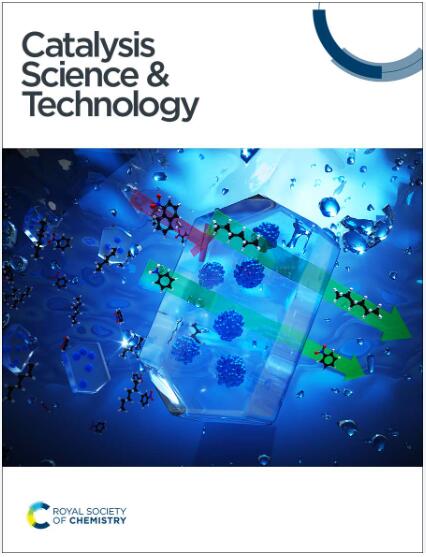Catalyst speciation and deactivation in the ruthenium-mediated transformation of ethynyl-β-ionol to α,β-unsaturated esters for vitamin A synthesis†
IF 4.4
3区 化学
Q2 CHEMISTRY, PHYSICAL
引用次数: 0
Abstract
The catalytic anti-Markovnikov addition of carboxylic acids to propargylic alcohols to furnish unsaturated esters is an appealing transformation due to its mild conditions, good selectivity and high atom economy. Treatment of the γ-hydroxy α,β-unsaturated esters with Brønsted acids gives access to enals which serve as important building blocks for the production of vitamins and aroma compounds from biogenic terpenes. Unfortunately, current turnover numbers (TON) for this ruthenium-catalysed reaction are too low for industrial application (<100). Here we present a detailed investigation into the speciation and deactivation of the most active [(dppe)RuII(MA)2] catalyst in the anti-Markovnikov addition of carboxylic acids to ethynyl-β-ionol. Multi-nuclear high resolution FlowNMR spectroscopy gave insight into a range of kinetically relevant carboxylate complexes, allowed quantifying catalyst deactivation kinetics, and showed a pronounced influence of the carboxylic acid on catalyst stability. Systematic optimisation of reaction parameters resulted in significant improvements in catalyst productivity to reach TONs of >450 for ethynyl-β-ionol and >2000 for phenylacetylene.

钌介导的乙基β-离子醇转化为维生素A合成中α,β-不饱和酯的催化剂形成和失活
丙炔醇催化羧酸反马尔可夫尼科夫加成制备不饱和酯具有条件温和、选择性好、原子经济性高等优点。用Brønsted酸处理γ-羟基α,β-不饱和酯可以获得烯醛,这些烯醛是生物萜类产生维生素和芳香化合物的重要组成部分。不幸的是,目前这种钌催化反应的周转率(TON)对于工业应用来说太低了(<100)。本文中,我们详细研究了羧酸对乙基β-离子醇的反马尔可夫尼科夫加成反应中最活跃的[(dppe)RuII(MA)2]催化剂的形成和失活。多核高分辨率FlowNMR光谱分析可以深入了解一系列与动力学相关的羧酸配合物,可以量化催化剂失活动力学,并显示羧酸对催化剂稳定性的显著影响。系统优化反应参数,使催化剂的生产效率显著提高,乙基β-离子醇达到450吨,苯乙炔达到2000吨。
本文章由计算机程序翻译,如有差异,请以英文原文为准。
求助全文
约1分钟内获得全文
求助全文
来源期刊

Catalysis Science & Technology
CHEMISTRY, PHYSICAL-
CiteScore
8.70
自引率
6.00%
发文量
587
审稿时长
1.5 months
期刊介绍:
A multidisciplinary journal focusing on cutting edge research across all fundamental science and technological aspects of catalysis.
Editor-in-chief: Bert Weckhuysen
Impact factor: 5.0
Time to first decision (peer reviewed only): 31 days
 求助内容:
求助内容: 应助结果提醒方式:
应助结果提醒方式:


